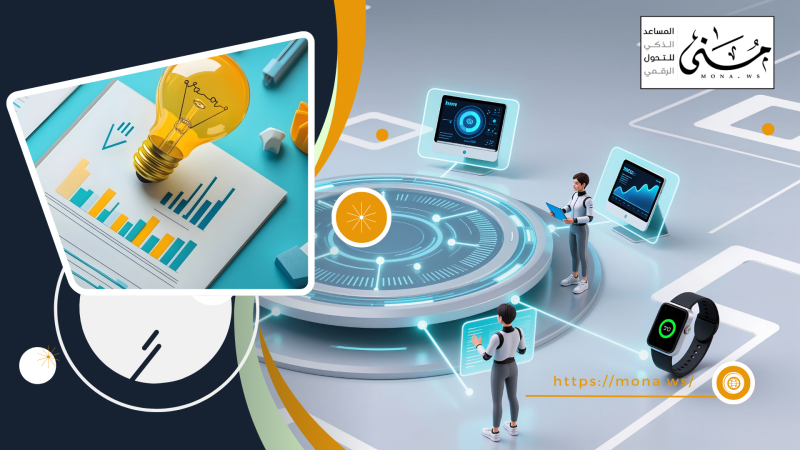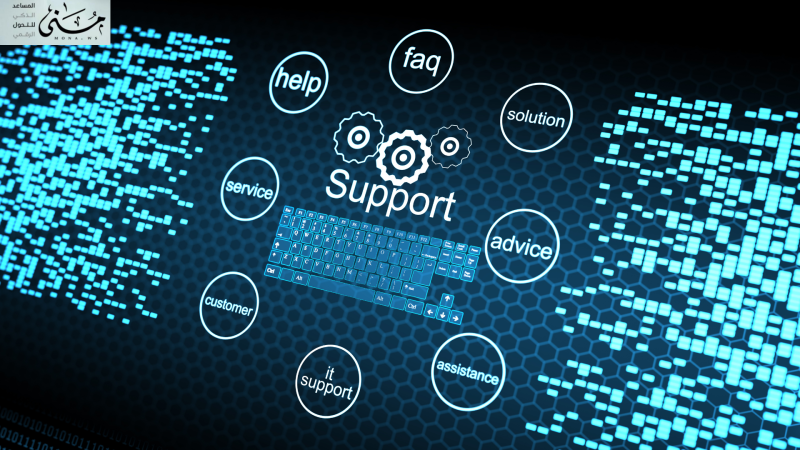In modern organizations, it is no longer sufficient to formulate policies, draw up structures, and hold meetings unless there is effective internal control to protect performance and detect deviations before they turn into crises. The difference between a cohesive and stable organization and a faltering and chaotic one often lies in the quality of internal control, not just the quality of plans.
In many organizations, internal control is merely a formality, practiced as an administrative routine, without measurement tools, documentation systems, or early warning indicators. However, the control that truly makes a difference is one built on an intelligent, integrated system linked to decisions, documents, tasks, and results.
Continue reading the mobile to learn more information.
The concept of effective internal control
Internal control is the set of activities and procedures that an organization puts in place to ensure that all employees comply with approved policies, achieve operational objectives, and reduce the chances of error or fraud. However, it becomes “effective” when it is characterized by the following:
- Integrate with daily operations, not separate from them.
- It is based on documented data and measurable indicators.
- Clarity of powers and responsibilities.
Use digital systems like DocSuite to track performance and verify compliance.
Why is internal control necessary in every organization?
Censorship is Interior necessity in all institution Because it is Includes accuracy Data And its reliability, And it is forbidden Mistakes and fraud, And strengthen Compliance For the laws and regulations,as that it to improve Efficiency And effectiveness, And support take Decisions, And strengthen trust between Owners interest,from during application Censorship Interior, maybe For institutions investigation:
1️⃣ Preventing deviations before they occur
Having an internal control system is not only about accountability after errors occur, but also about detecting risks early through analysis, tracking, and warning.
2️⃣ Ensuring continuous compliance
By automated verification of compliance with policies and procedures, management can ensure that systems are implemented without deviation or delay.
3️⃣ Improving the quality of decisions
The more accurate and up-to-date the control data is, the more it helps management make decisions based on facts, rather than on intuition or estimates.
The difference between formal and effective control
The difference lies between Censorship formalism and censorship effective While The following:
Censorship formalism:
-focus on Compliance For the rules and procedures Specific pre.
-mostly what Be routine And it is limited on Verification from shape and appearance.
-may no It deals with The essence or Effectiveness The truth For operations.
Censorship effective:
-focus on investigation Objectives And the results.
-Evaluation Effectiveness The truth For operations And determine Fields Improvement.
-Aims to Strengthening performance And achieve Results Desired.
short, Censorship formalism care In compliance For the rules, while Censorship effective care By achieving Objectives And the results.
|
comparison |
Formal censorship |
effective control |
|
Source |
Periodic paper reports |
Live digital systems |
|
Interaction |
negative (after the event) |
proactive (before the event) |
|
Tools |
traditional models |
DocSuite and Dashboards |
|
value |
Formal review |
essential for decision making |
How do you build effective internal control in your organization?
You can easily build internal control in your organization by:
✅ 1. Linking control to operations
Control shouldn't be an isolated function, but rather linked to a workflow. In DocSuite, every action (request, approval, transfer) is linked to a control path that records who performed it, when, and the outcome of the step.
✅ 2. Use risk indicators
By analyzing vulnerabilities, risk indicators such as:
- Repeated delays in implementing procedures
- Exceeding authorized powers
- Unjustified changes to documents
All of which can be tracked automatically through internal control systems such as DocSuite.
✅ 3. Building real-time control panels
The dashboard in control systems like DocSuite allows management to monitor the implementation of policies and decisions in real time and immediately notice deviations.
✅ 4. Accurately documenting operations
Every procedure must have a documented control record: who initiated it, who approved it, who reviewed it, and the outcome. This is one of the pillars of intelligent internal control.
DocSuite provides you with a suite of tools designed to build an integrated internal control system, including:
- Audit Trail on each administrative transaction
- Instant alerts and warnings system when any breach occurs
- Interdepartmental Performance Comparison Reports
- Linking documents, decisions and officials
- Integrated internal control panel for senior management
All of this contributes to making internal control dynamic, digital, and accessible for analysis and monitoring from anywhere.
Examples of internal control application
There are several examples of the application of internal control, including:
Example 1: Monitoring exchange orders
Each financial disbursement order is linked to a clear control process, requires specific approvals from the finance and audit departments, and cannot be bypassed without notice.
Example 2: Tracking Policy Changes
Any changes to an institutional policy are automatically logged, documenting the username, date, and reason, and an immediate alert is sent to regulatory authorities.
Every organization that aspires to stability and growth must invest in a smart internal control system, not only to avoid risks, but also to enhance performance, achieve transparency, and strengthen governance.
Start today building a control system based on data, not assumptions, tracking, not estimates, and DocSuite, not paper.
Internal Control Performance Evaluation Indicators: Is Your System Really Effective?
Although most organizations have control systems in place, few can accurately answer the most important question: Is our internal control truly effective?
The answer does not come from impressions, but from clear key performance indicators (KPIs) that reflect the effectiveness of the regulatory system, its responsiveness to events, and its ability to prevent deviations and achieve governance.
✳️ What are the internal control performance indicators?
Below are the most important indicators that are recommended to be measured periodically to ensure that the internal control system is not only working, but working efficiently:
- Number of early warnings detected
This indicator reflects the ability of the control system to warn before a problem occurs, rather than after it occurs. The greater the number of early warnings compared to the number of actual deviations, the more proactive the system is.
- Alert response rate
Any internal control system requires effective human interaction. This indicator measures the speed with which specialized teams respond when a regulatory alert is issued by the system.
- Percentage of operations executed according to the specified powers
Every operation in the system must be conducted within the approved authorization limits. Any violation is recorded as a control violation and impacts the compliance assessment.
- Number of unjustified changes to policies and procedures
It indicates the degree of stability and control of the institutional system. Frequent modifications without formal justification are a sign of regulatory risk.
- Extent of documentation of procedures and decisions
This indicator measures the percentage of processes that are fully documented within the system, from start to finish, including approvals, comments, and modification history.
DocSuite's role in supporting and analyzing indicators
Systems like DocSuite don't just enable monitoring, they enable you to measure it accurately, by:
Dashboards that display KPIs in real time.
Automated audit trails that monitor every change to policies, procedures, or documents.
Monthly audit reports help management make data-driven decisions.
Effective internal control is measured not only by the presence of a system, but also by the extent of its monitoring, documentation, data analysis, and rapid response to deviations.
That's why using smart tools like DocSuite is the best option for building an internal control culture that relies on metrics, not estimates, and on data, not impressions.
 تعرف على الرقابة الداخلية الفعالة: كركيزة لكل نظام حوكمي من خلال هذا المقال
تعرف على الرقابة الداخلية الفعالة: كركيزة لكل نظام حوكمي من خلال هذا المقال









Comments
Add New Comment